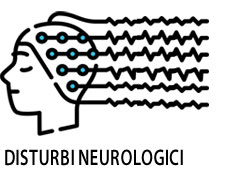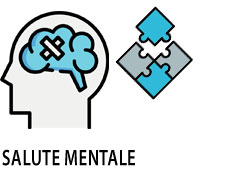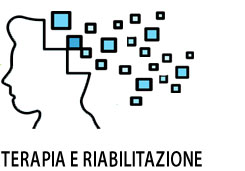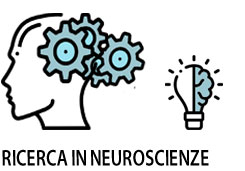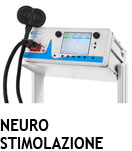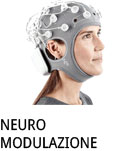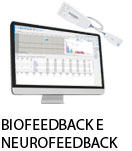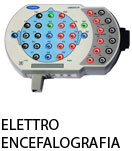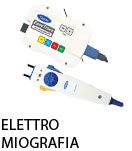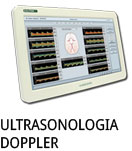- +39 011 5821948
- info@geasoluzioni.it
- Lun - Ven 8:00 - 17:30
Transcranial Direct Current Stimulation vs Sham Stimulation to Treat Aphasia After Stroke
- Abstract:
- Importance: Aphasia is a debilitating language disorder for which behavioral speech therapy is the most efficient treatment, but therapy outcomes are variable and full recovery is not always achieved. It remains unclear if adjunctive brain stimulation (anodal transcranial direct current stimulation [A-tDCS]) applied during aphasia therapy can improve outcomes. Objective: To examine the futility of studying A-tDCS as an adjunctive intervention during speech therapy to improve speech production (naming) for individuals with long-term poststroke aphasia. Design, Setting, and Participants: Double-blinded, prospective randomized clinical trial using a futility design to test adjunctive A-tDCS during speech therapy. The setting was an outpatient clinic. Enrollment of individuals began in August 2012 and was completed in March 2017, and the duration of follow-up was 6 months. Analyses began in April 2017. The study recruited from a volunteer sample, and 89 patients were screened. Patients with long-term (>6 months) aphasia due to 1 previous left hemisphere stroke were enrolled. In comparing A-tDCS and sham tDCS, patients were matched based on site (University of South Carolina or Medical University of South Carolina), baseline age, type of aphasia, and aphasia severity. Interventions: Outpatient speech therapy for 3 weeks (15 sessions, 45 minutes each) combined with either A-tDCS vs sham tDCS applied to preserved left temporal lobe regions. Main Outcomes and Measures: The primary outcome was the ability to name common objects, assessed twice before and after therapy. Results: A total of 74 patients were enrolled. Participants had a mean (SD) age of 60 (10) years, had 15 (2) years of education, and were 44 (40) months from stroke onset. There were 52 men (70%) and 62 non-Hispanic white individuals (84%). Most were retired or not employed (59 [80%]). Broca aphasia was the most common aphasia type (39 [52.7%]). The adjusted mean (SE) change from pretreatment baseline in correct naming was 13.9 (2.4) words (95% CI, 9.0-18.7) for A-tDCS and 8.2 (2.2) words (95% CI, 3.8-12.6) for sham tDCS, with mean (SE) A-tDCS difference of 5.7 (3.3) words (95% CI, −0.9 to 12.3), indicating a relative 70% increase in correct naming for A-tDCS relative to sham. The futility hypothesis P value was .90, indicating failure to reject the null hypothesis and, therefore, providing no evidence that further study of A-tDCS is futile. No serious adverse events were associated with A-tDCS. Conclusions and Relevance: Our findings provide motivation to proceed with another trial to study the effect of A-tDCS on the outcome of aphasia treatment in individuals poststroke. Anodal tDCS during speech therapy is feasible and potentially transformative for aphasia treatment and should be further studied.
- Patologie/Applicazioni:
- Anno:
- 2018
- Tipo di pubblicazione:
- Articolo
- Parola chiave:
- stimolazione elettrica transcranica; stimolazione Sham; Afasia; Stroke
- Testata scientifica:
- JAMA Neurology
- Nota:
- Studio che sostiene l'importanza di una maggiore valutazione della TDC anodica durante la logopedia per il trattamento dei pazienti con afasia. Sedute di logopedia ambulatoriale per 3 settimane (15 sedute di 45 minuti ciascuna) combinate con tDCS attiva o tDCS sham applicate alle regioni non intaccate del lobo temporale sinistro. Non si può concludere che la tDCS attiva sia efficace per potenziare l'effetto dell'afasia anche se l'entità del miglioramento della produzione verbale è numericamente maggiore con la tDCS attiva rispetto alla tDCS sham.
- DOI:
- 10.1001/jamaneurol.2018.2287
Hits: 1914
La nostra storia
GEA soluzioni si affaccia nel 2013 al mercato della strumentazione medicale di alto livello tecnologico ma la sua storia parte da più lontano, clicca qui per approfondire.
GEA SOLUZIONI SRL
via Issiglio 95/10, Torino
Tel.: 011 5821948 / 011 4463853
Fax: 011 0433281
Email: info @ geasoluzioni.it
P. IVA IT11696920013
REA TO1233648

